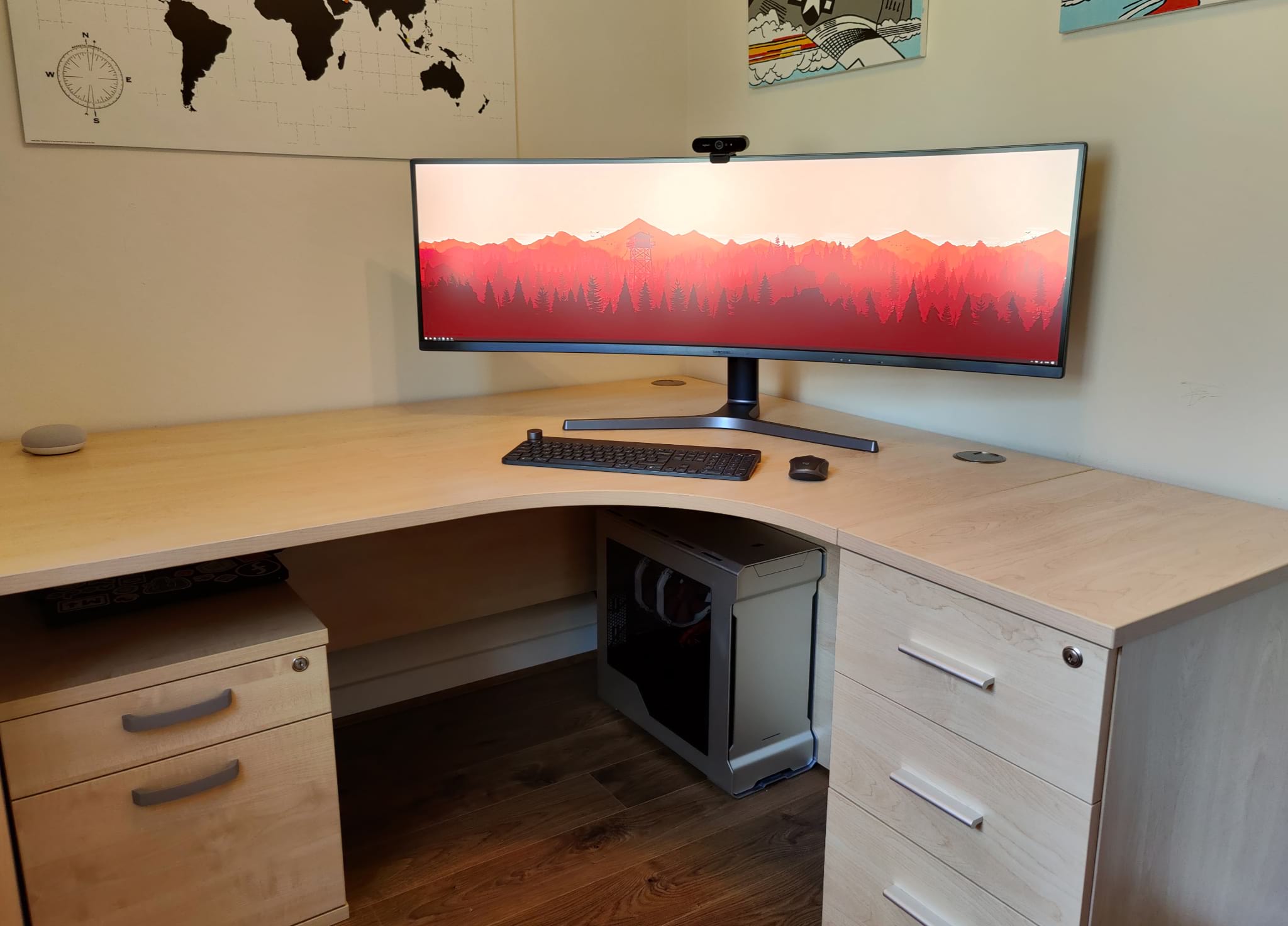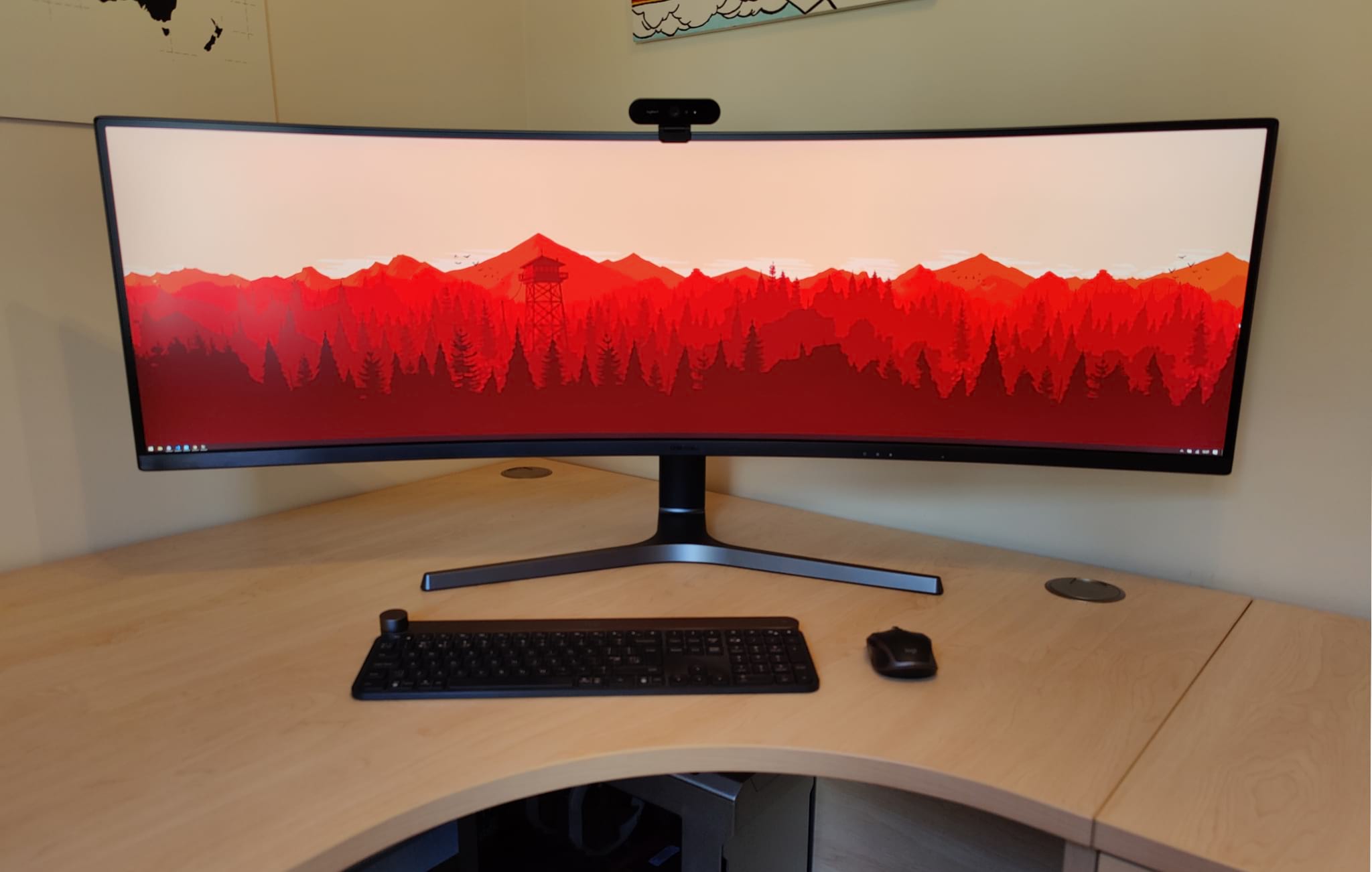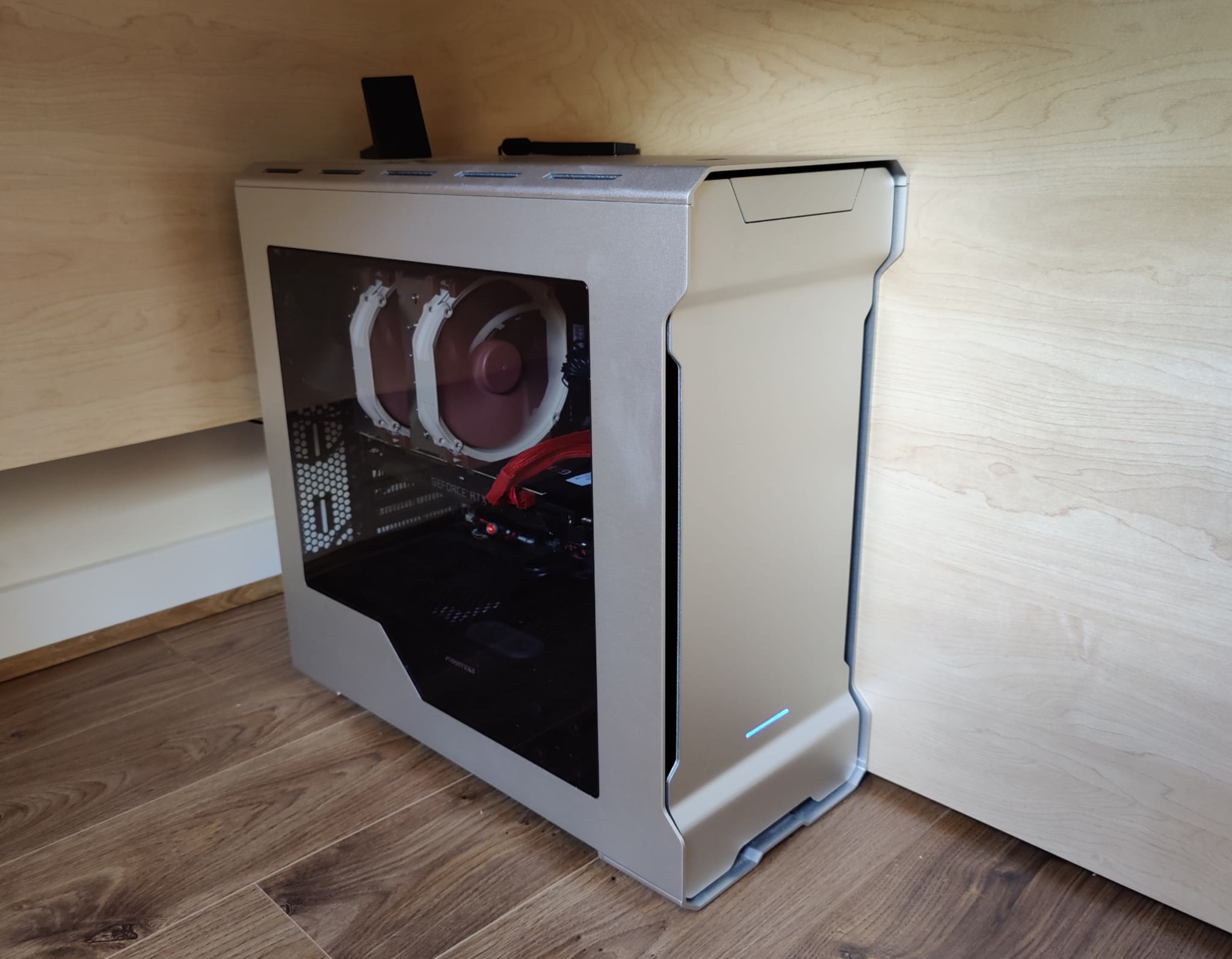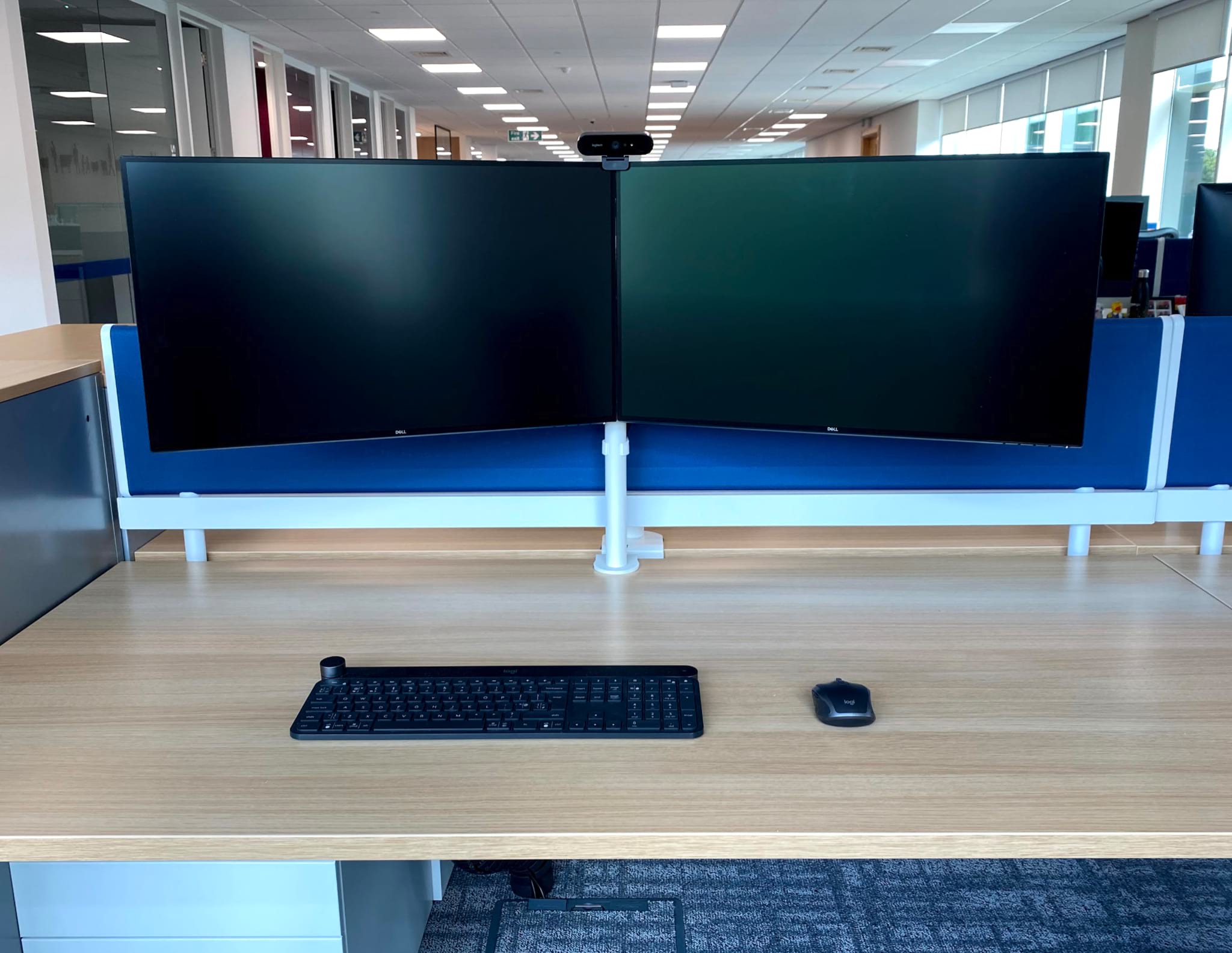My Setup (Q3 2020)
Update - Please refer to the article “My Setup (Q3 2023)” for a summary of my latest setup.
Home Setup
At home, I switch between four devices (three laptops and one desktop).
My daily driver is a Razer Blade 15 Advanced (Late-2019). It is primarily used for productivity tasks, software development, photo editing, virtual labs, gaming and game development (GameMaker Studio 2). The full specification can be found below:
- Razer Blade 15 Advanced (Late-2019)
- 2.6GHz 6-Core Intel i7-9750H (Turbo up to 4.5GHz)
- 64GB Corsair Vengeance Series 2666MHz DDR4 RAM
- 1TB Samsung 970 EVO Plus PCI-e NVMe SSD
- Intel UHD Graphics 630
- NVIDIA GeForce RTX 2080 Max-Q 8GB GDDR6
- 15.6-inch 4K OLED Touch DCI-P3 HDR400 Display (3840x2160)
I also have a 16-inch Apple MacBook Pro (NOV-2019), which is a secondary device providing native access to the Apple ecosystem for software development, video editing, etc. The full specification can be found below:
- 16-inch MacBook Pro with Retina Display (NOV-2019)
- 2.4GHz 8-Core Intel i9-9980HK (Turbo up to 5.0GHz)
- 32GB 2666MHz DDR4 RAM
- 1TB PCI-e SSD
- Intel UHD Graphics 630
- AMD Radeon Pro 5500M 8GB GDDR6
- 16-inch IPS P3 Display (3072x1920, 500nits)
I have a 13-inch Dell XPS 13 (9300), which is reserved for Linux (specifically Fedora). Dell provides native support for Linux (primarily Ubuntu), making it a good candidate for Linux applications and testing. The full specification can be found below:
- 13-inch Dell XPS 13 (9300)
- 1.3GHz 4-Core Intel i7-1065G7 (Turbo up to 3.9GHz)
- 16GB 3733MHz LPDDR4x RAM
- 512GB M.2 PCI-e NVMe SSD
- Intel Iris Plus Graphics
- 13.4-inch Display (1920x1200, 500nits)
Alongside my laptops, I have a custom-built desktop PC. The specification (listed below) is a couple of years old but still provides excellent overall performance. Although released in 2018, the GeForce RTX 2080 Ti is still a phenomenal graphics card, enabling high-performance Ray Tracing gaming.
- Asus Maximus VIII Hero Alpha (Intel Z170)
- Intel Core i7-6700K 4.0GHz @ 4.6GHz
- Noctua NH-D15 CPU Cooler
- 32GB Corsair Vengeance LPX DDR4 PC4-24000C15 (15-17-17-35)
- 1TB Samsung PM981 M.2 PCI-e NVMe SSD
- PNY GeForce RTX 2080 Ti 11GB XLR8 Gaming Overclocked Edition
- EVGA SuperNova P2 1000W ‘80 Plus Platinum’ PSU
- Phanteks Enthoo Evolv ATX Mid Tower Case
The Intel Core i7-6700K is four-years-old, however, Intel has provided little incentive to upgrade. For example, their upcoming 10th generation processors are still based on the Skylake microarchitecture, first released in 2015.
I continue to watch AMD closely, who are now the clear performance leaders with their Zen 2 microarchitecture, but will probably delay any future upgrades until transformative technologies such as PCI-e 4.0 are mainstream.
In 2020, I replaced my previous three monitors with one Super Ultrawide, specifically the Samsung C49RG90. The full specification of the monitor can be found below.
- Model: Samsung C49RG90
- Panel Size: 49-inch
- Panel Type: VA
- Panel Curvature: 1800R
- Aspect Ratio: 32:9
- Resolution: 5120x1440
- Refresh Rate: 120Hz
- Variable Refresh Rate: AMD FreeSync 2 (48-120Hz Range)
- Response Time: 4ms (GTG)
- Colour Accuracy: 125% sRGB, 92% Adobe RGB, 95% DCI-P3
- High Dynamic Range: HDR1000
- Brightness: 600cd/m2 (Typical), 1000cd/m2 (Peak)
My workspace is kept fairly minimal, the Razer Blade 15 Advanced, MacBook Pro and Dell XPS 13 can connect to the monitors via a StarTech Dual-DisplayPort to ThunderBolt 3 Adapter, providing a single-cable solution.

As you can see, for peripherals, I primarily use the Logitech Craft, Logitech MX Anywhere 3 and Logitech Brio Ultra HD Pro. The keyboard and mouse were selected as they include “Easy-Switch”, which makes it simple to toggle between multiple Bluetooth devices.
The image below provides a closer look at the Samsung C49RG90 monitor.

Additional peripherals include headphones (Bang & Olufsen BeoPlay H8), controller (Microsoft Xbox Elite Series 2), flight controller (Saitek X-55), steering wheel (Logitech G29) and virtual relaity headset (Oculus Quest).
As highlighted in the image below, the desktop PC is hidden under the desk, with the case door exposed providing easy access to the components.

The desk and matching pedestals are from Three Counties Office Furniture. They are designed for corporate use, therefore are hard-wearing and include integrated cable management.
Finally, I use a Herman Miller Setu chair, which includes the Kinematic Spine to control resistance and automatically support your weight as you recline.
Work Setup
At work, I use the Razer Blade 15 Advanced, Apple MacBook Pro and/or Dell XPS 13 (depending on the workload).
I use two 27-inch Dell U2718Q IPS HDR 4K monitors, connected via the previously mentioned StarTech Dual-DisplayPort to ThunderBolt 3 Adapter. To provided consistency, all other peripherals (e.g. Mouse, Keyboard, and Webcam) are the same as home.

The desk is very basic, with a simple dual-monitor stand. Similar to at home, I use a Herman Miller chair at work, however, due to the extended hours, it is the more robust Mirra 2. This chair includes a phenomenal amount of adjustment, ensuring all-day comfort.